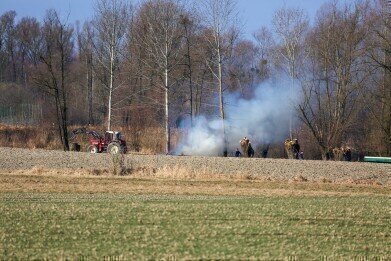Business news
5 Types of Agricultural Pollution
Nov 19 2022
The advances in modern farming techniques have been nothing short of miraculous. From small communities which used husbandry to feed themselves, store supplies for winter and achieve little else, we have now transformed agriculture into a global industry capable of feeding the world’s eight billion people.
Unfortunately, that progress has come with a price. Today, agriculture comes with quite a high environmental footprint, with various types, causes and effects of the pollution it engenders. In this brief introduction to the topic, we’ll investigate in greater detail a handful of the types of contamination that are part and parcel of the farming industry today.
Fertilisers
The use of fertilisers to bolster crop yields has been instrumental in ensuring we have enough food for everyone. However, we have not used these chemicals sparingly and the vast majority of product that is sprayed on a field is not actually absorbed by the intended crop. The excess can contaminate soils or else be washed away into nearby bodies of water, thus putting pressure on those ecosystems by upsetting the delicate balance of nutrients found in them.
Pesticides
On the flip-side, pesticides have been very effective at killing off pests, weeds and other unwanted flora and fauna. In fact, they might be too effective at the task, since they can harm other species which feed upon the affected plants and animals. In particular, bee populations have been declining all over the globe in recent years due to the widespread use of neonicotinoids. Their role as pollinators makes their loss particularly problematic.
Exhaust fumes
Farmyard equipment and machinery has cut down on the amount of manual labour involved in agriculture, making the lives of farmers and their hands that much easier. However, many of them are powered by petrol or diesel and as a result, produce significant amounts of harmful gases through their exhaust fumes. Carbon dioxide is the most notorious one due to its effect on the environment, but there are plenty of others harmful to human health.
Methane
It’s estimated that on average, every cow will expel (ahem) as much as 100kg of methane into the atmosphere on an annual basis. Given that there are almost one billion cows worldwide, that means that 100,000,000kg of the stuff are being belched out by cattle across the globe each year… and that’s even before we’ve accounted for other ruminant animals! With dairy and livestock such a leading contributor to methane emissions, it’s no surprise that agriculture has a bad rap.
Sedimentation
One of the lesser publicised types of pollution caused by farming is sedimentation. Industrialized farming techniques often involve over-tilling the land, which damages soil quality, facilitates run-off and leads to soil erosion. This soil inevitably ends up in streams, lakes, rivers and coastal waters in the vicinity and the muddiness and turbidity it causes can negatively impact flora and fauna by depriving organisms of sunlight and interfering with their normal rhythms of life.
Digital Edition
IET 35.2 March
April 2025
Air Monitoring - Probe Sampling in Hazardous Areas Under Extreme Conditions - New, Game-Changing Sensor for Methane Emissions - Blue Sky Thinking: a 50-year Retrospective on Technological Prog...
View all digital editions
Events
Apr 21 2025 Shanghai, China
Apr 22 2025 Hammamet, Tunisia
Apr 22 2025 Kintex, South Korea
Analytica Anacon India & IndiaLabExpo
Apr 23 2025 Mumbai, India
Apr 23 2025 Moscow, Russia

.jpg)




_(4427399123)-(2).jpg)












